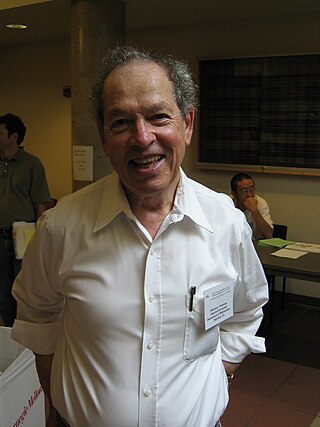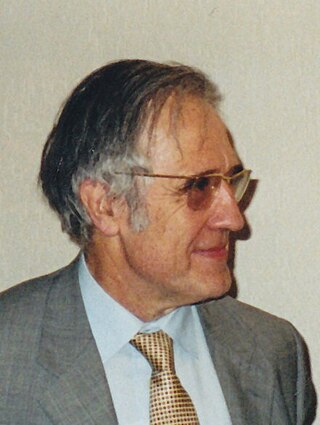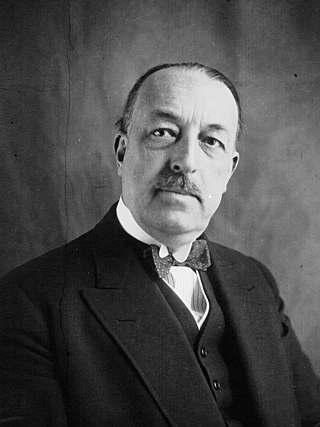
Hourya Sinaceur is a Moroccan philosopher. She is an expert in the theory and history of mathematics.

Hourya Sinaceur is a Moroccan philosopher. She is an expert in the theory and history of mathematics.
Hourya Benis was born in 1940 in Casablanca in Morocco. [1] Sinaceur worked for Paris-Sorbonne University and the French National Centre for Scientific Research which is also in Paris, and the URS[ clarification needed ] in Rabat. She has also served as a member of the National French Committee of History and Philosophy of Science (Comité National Francais d'Histoire et de Philosophie des Sciences. [2]
She is the author of the book Corps et Modèles (1991), translated into English as Field and Models: From Sturm to Tarski and Robinson (Birkhauser, 2003). [3] and of Functions and Generality of Logic: Reflections on Dedekind's and Frege's logicisms (Springer, 2015). [4]

Alfred Tarski was a Polish-American logician and mathematician. A prolific author best known for his work on model theory, metamathematics, and algebraic logic, he also contributed to abstract algebra, topology, geometry, measure theory, mathematical logic, set theory, and analytic philosophy.

Solomon Feferman was an American philosopher and mathematician who worked in mathematical logic. In addition to his prolific technical work in proof theory, computability theory, and set theory, he was known for his contributions to the history of logic and as a vocal proponent of the philosophy of mathematics known as predicativism, notably from an anti-platonist stance.

Étienne Émile Marie Boutroux was an eminent 19th-century French philosopher of science and religion, and a historian of philosophy. He was a firm opponent of materialism in science. He was a spiritual philosopher who defended the idea that religion and science are compatible at a time when the power of science was rising inexorably. His work is overshadowed in the English-speaking world by that of the more celebrated Henri Bergson. He was elected membership of the Academy of Moral and Political Sciences in 1898 and in 1912 to the Académie française.

Victorine-Louise Meurent was a French painter and a model for painters. Although she is best known as the favorite model of Édouard Manet, she was an artist in her own right who regularly exhibited at the prestigious Paris Salon. In 1876, her paintings were selected for inclusion at the Salon's juried exhibition, when Manet's work was not.

Ahmed Balafrej was the second Prime Minister of Morocco between May 12, 1958, and December 2, 1958. He was a significant figure in the struggle for the independence of Morocco.

Mouloud Mammeri was an Algerian writer, anthropologist and linguist.
Béni-oui-oui was a derogatory term for Muslims considered to be collaborators with the French colonial institutions in North Africa during the period of French rule. French administrators in Algeria relied heavily on Muslim intermediaries in their dealings with the indigenous population and many of these cadis, tax collectors or other tribal authorities were considered by nationalists to be mere rubber stamps and incapable of independent initiative.

Paul Gochet was a Belgian logician, philosopher, and emeritus professor of the University of Liège. His research was mainly in the fields of logic and analytic philosophy. He is perhaps best known for his works on Quine's philosophy.

Dominique Lecourt was a French philosopher. He is known in the Anglophone world primarily for his work developing a materialist interpretation of the philosophy of science of Gaston Bachelard.

Janina Hosiasson-Lindenbaum was a Polish logician and philosopher. She published some twenty research papers along with translations into Polish of three books by Bertrand Russell. The main focus of her writings was on foundational problems related to probability, induction and confirmation. She is noted especially for authoring the first printed discussion of the Raven Paradox which she credits to Carl Hempel and the probabilistic solution she outlined to it. Shot by the Gestapo in 1942, she, like her husband Adolf Lindenbaum, and many other eminent representatives of Polish logic, shared the fate of millions of Jews murdered on Polish soil by the Nazis.

Claudine Tiercelin is a French philosopher, working on metaphysics and philosophy of science. She is professor of philosophy at the Collège de France, after having been professor at the Paris 12 Val de Marne University.

Léon Jean Jacques Baréty was a French politician who was briefly Minister of Industry and Commerce in 1940.
Sabine Chaouche is a scholar who specializes in the history of theatre, intellectual history, social and economic history.

Patrice Bret is a French historian of science and technology and a senior researcher at the Centre Alexandre-Koyré in Paris. His areas of expertise include the translation and circulation of scientific and technical knowledge through communities in the 18th century, the technology and history of armaments in the 18th-20th centuries, and science and technology under colonisation.
Mounia Bennani-Chraïbi is a Moroccan political scientist, author and professor at the University of Lausanne. She published several works on activism, social media, youth issues and elections.
Anita Burdman Feferman was an American historian of mathematics and biographer, known for her biographies of Jean van Heijenoort and of Alfred Tarski.
Anne C. Morel was an American mathematician known for her work in logic, order theory, and algebra. She was the first female full professor of mathematics at the University of Washington.
Marianne Carbonnier-Burkard is a French historian of modern Protestantism and honorary docent at the Faculté de théologie protestante de Paris. She is vice-president of the Société de l'histoire du protestantisme français and a member of the Comité consultatif national d'éthique pour les sciences de la vie et de la santé (2013–2017).

Michela Malpangotto is an Italian historian of science, specializing in the history of astronomy leading up to the Copernican Revolution, and its associated mathematics. She is a director of research for the French National Centre for Scientific Research, affiliated with the Centre Jean Pépin at the École normale supérieure (Paris).
Bernard Gèze was a French geologist, hydrogeologist, volcanologist, and speleologist.